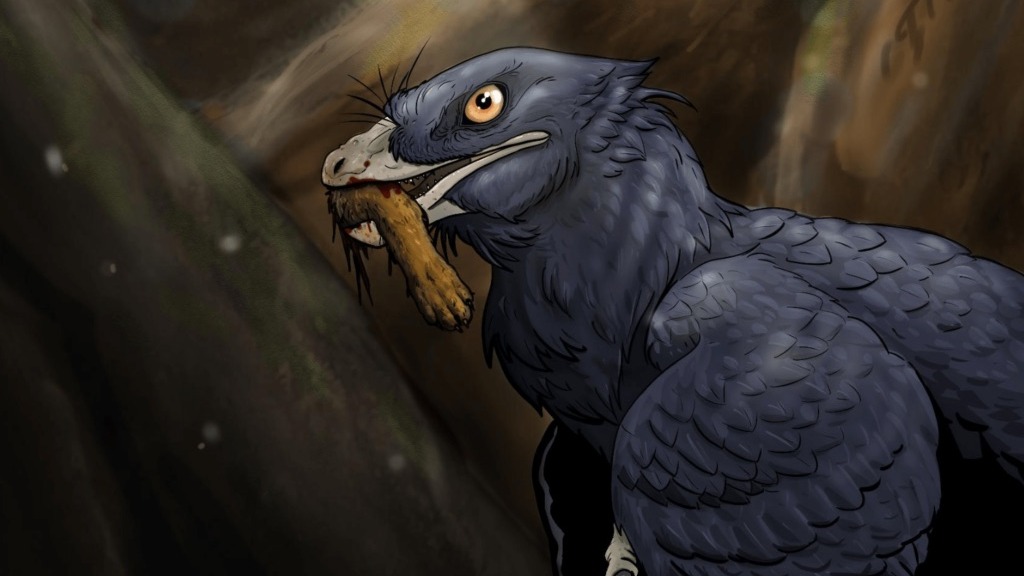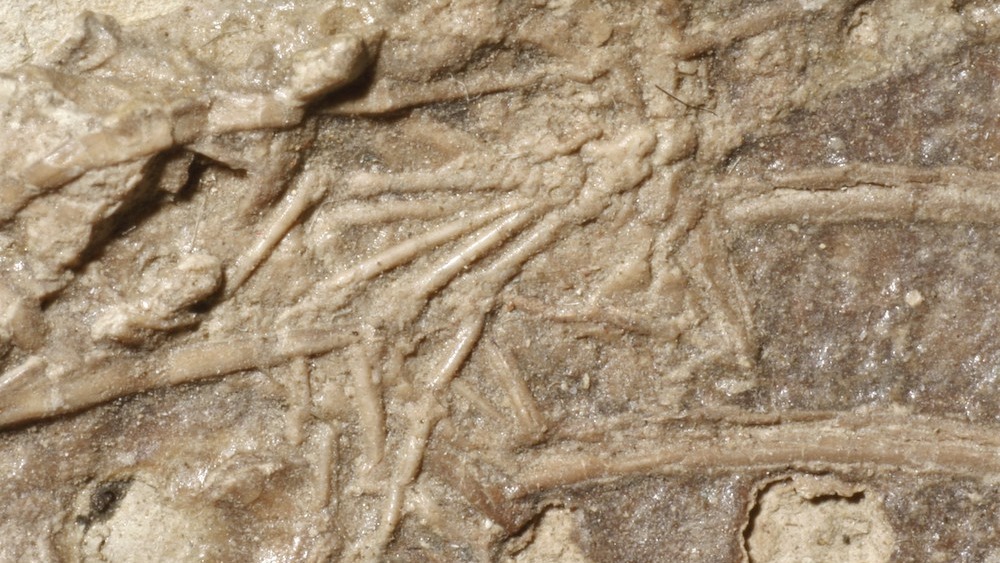Scientists find the earliest evidence of a dinosaur eating a mammal
Birdlike dinosaur "was not a picky eater," as evidenced by a rodent's foot found in its fossilized remains.

Around 120 million years ago, a crow-size raptor gobbled up a mammal for its last meal. Researchers came across the last supper of the Microraptor, a birdlike carnivorous dinosaur with four wings, while examining its fossilized remains at an undisclosed museum in China, a new study reveals.
The well-preserved fossil of the Microraptor zhaoianus included the 0.39-inch-long (1 centimeter) foot of a small mammal, likely a rodent, resting inside the small theropod's rib cage, according to a statement.
The discovery marks the earliest known case of a dinosaur gobbling up a mammal, the researchers wrote in the study, published on Dec. 20 in the Journal of Vertebrate Paleontology.
"At first, I couldn't believe it," study co-author Hans Larsson, director of the Redpath Museum and a vertebrate paleontologist at McGill University in Montreal, said in the statement. "These finds are the only solid evidence we have about the food consumption of these long extinct animals — and they are exceptionally rare."
Related: Ancestors of 'veggie' dinosaurs actually feasted on meat
Prior to this finding, there were only 20 known cases of fossilized remains that contained a carnivorous dinosaur's last meal, according to the statement. That included the skeleton of Daurlong wangi, a species of raptor also found in China, whose gut contained "a large, bluish layer in the abdomen." Among the 20 cases, scientists have only four published examples (not including this one) of stomach contents from Microraptor itself.
The new discovery is also only the second piece of direct evidence that theropods — a group of bipedal, mostly meat-eating dinosaurs that includes Tyrannosaurus rex — gobbled up mammals, the researchers wrote in the study.
Sign up for the Live Science daily newsletter now
Get the world’s most fascinating discoveries delivered straight to your inbox.

This Microraptor, whose name means "tiny plunderer," was found in Liaoning province in northeastern China's Jiufotang Formation. Although the exact dates of Jiufotang are unknown, it contains fossils from the early Cretaceous period (145 million to 100.5 million years ago), a 2000 study that originally described the fossil in the journal Nature found.
"We already know of Microraptor specimens preserved with parts of fish, a bird and a lizard in their bellies," Larsson said. "This new find adds a small mammal to their diet, suggesting these dinosaurs were opportunistic and not picky eaters."
He added, "Knowing they were not specialized to any particular food is a big deal" since this could be the first evidence of a generalist carnivore that was part of the Cretaceous ecosystem. It could have served as a "stabilizer in the ecosystem" much like modern-day foxes and crows, according to the statement.
"Knowing that Microraptor was a generalist carnivore puts a new perspective on how ancient ecosystems may have worked," Larsson said, "and a possible insight into the success of these small, feathered dinosaurs."
Jennifer Nalewicki is former Live Science staff writer and Salt Lake City-based journalist whose work has been featured in The New York Times, Smithsonian Magazine, Scientific American, Popular Mechanics and more. She covers several science topics from planet Earth to paleontology and archaeology to health and culture. Prior to freelancing, Jennifer held an Editor role at Time Inc. Jennifer has a bachelor's degree in Journalism from The University of Texas at Austin.










